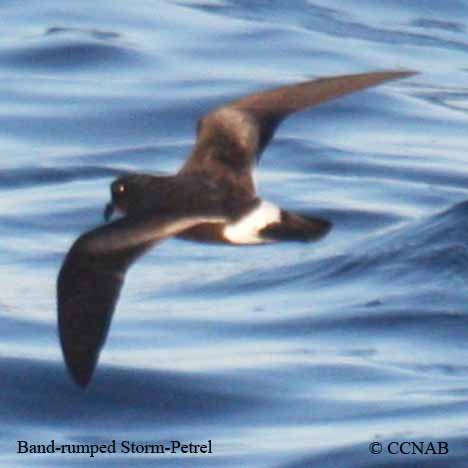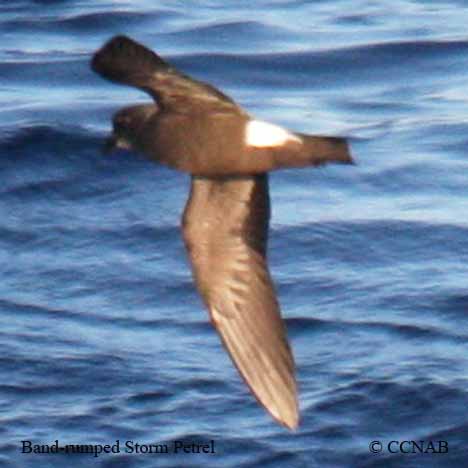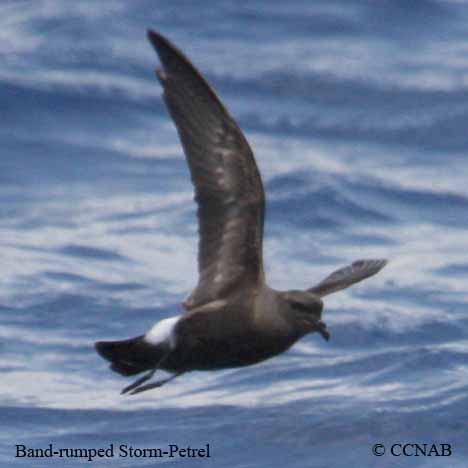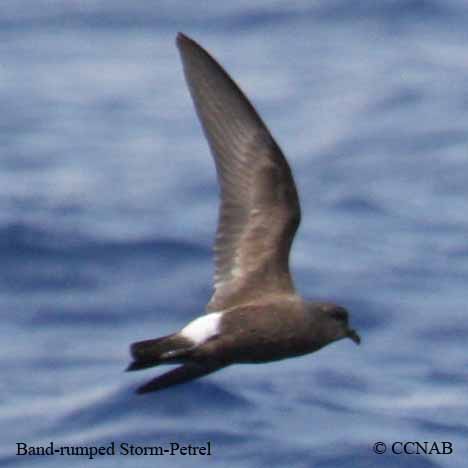North American Bird Search Box
This search box can be used to find bird species using bird's english, french or latin name, or to identify bird by its 4 letter Alpha Code
Field Guide for all the Birds of North America
Band-rumped Storm-Petrel
4 Letter (english names) Alpha Code: BSTP (2)
Océanite de Castro
Hydrobates castro
Information, images and range maps on over 1,000 birds of North America, including sub-species, vagrants, introduced birds and possibilities
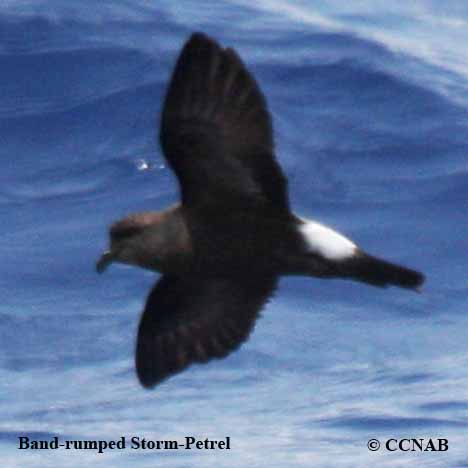
Life, Habitat & Pictures of North American Storm-Petrels
| B L | W W | W | Family | Latin Name |
|---|---|---|---|---|
| 9" 22.7cm | 19" 48.3cm | 1.5 oz. 42.5g | Hydrobatidae | Hydrobates castro |
- Summer
- Year Around
- Winter
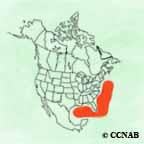
The Band-rumped Storm-Petrel looks similar to the Wilson's Storm-Petrel, except for having shorter legs. They are both seen in areas of the Atlantic Ocean where their ranges overlap. This small mostly black and white swallow-like seabird prefers the warmer tropical waters. It is seen off the coast of Virginia, through the Bahamas islands, west of the southern tip of Florida and into the Gulf of Mexico and the Caribbean Sea.
Reference to Other Bird Site:
ABA - American Birding Association This site represents an organization that maintains official records of all birds species that have been proven to have been seen inside the perimeters of the North American Continent and the surrounding bodies of water. Regular revised versions are posted to keep the bird list current at all times. This is the list used by all serious birders over their lifetime. You may be aware of the movie called the "Big Year". It was with this list that all the competing birders used in an attempt to set a new record as to how many bird species that could be seen by an individual birder in one calendar year.
